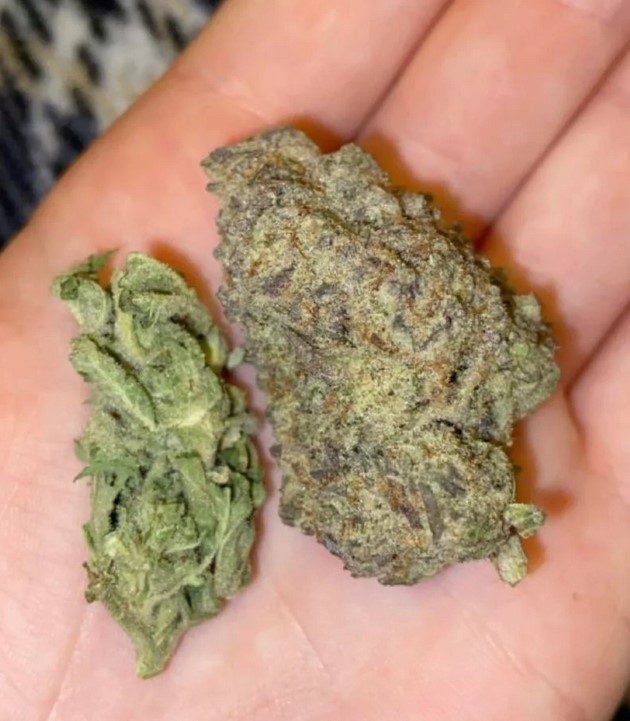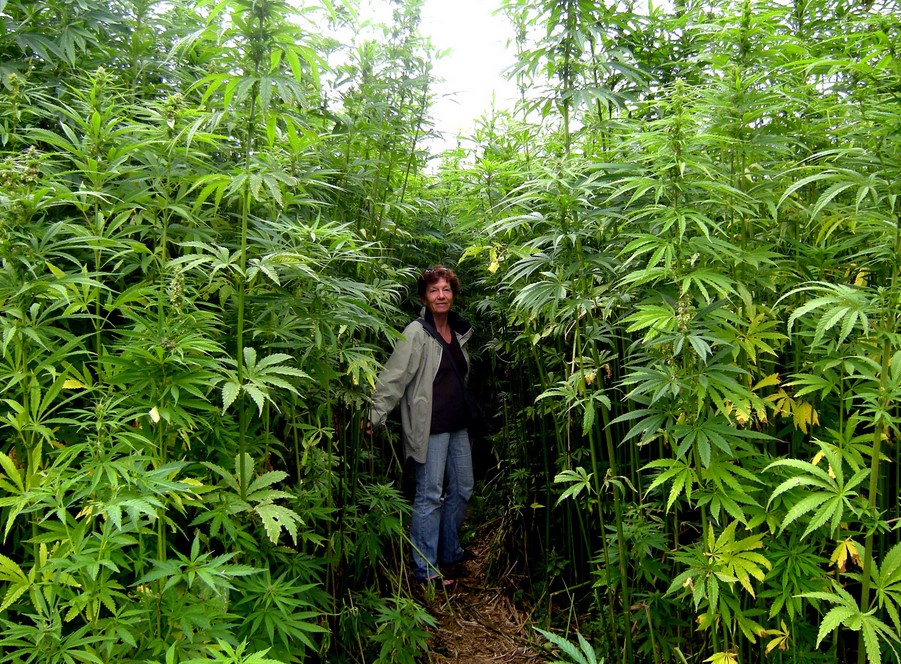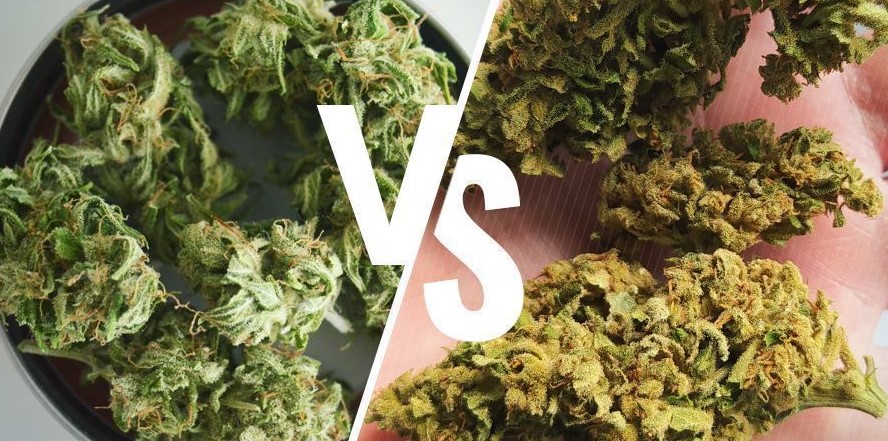Non classé
Indoor vs. Outdoor Weed: A Visual Guide
This article was written to help you navigate the many different sorts of cannabis available at dispensaries. This does not apply to every souche, because each one has its own set of traits and responds differently to the farmers’ treatment. However, these methods may be utilized to analyze the many minute distinctions between cannabis cultivated outside or indoors. Cannabis is a varied and indeterminable plant; not all distinguishing features apply to every scenario because each strain is unique.
Whether they were cultivated indoors or outside, buds can look good or bad. Regardless of whether they were produced indoors or outdoors, poorly developed indoor marijuana may appear to be outdoor, while properly grown outdoor marijuana may seem to be indoor. However, there are some notable indicators that cannabis has been cultivated indoors vs. outdoors, so sit back and enjoy our visual guide to indoor vs. outdoor marijuana.
First, let’s do a baseline calibration to determine where you are starting.
Can you tell which one was grown indoors and which was grown outside?
If you guessed that A was outside and B was indoors, you’re correct! Let’s see how you can easily tell whether cannabis was grown in a greenhouse or an open field.
Indoor vs. Outdoor Weed: Size
The sizes of the buds are, in many ways, the first visible indicators to determine whether they were produced indoors or outside. However, it is a common belief that everything is bigger with outdoor-grown cannabis. The buds themselves are larger and chunkier, but looking at the stem is one of the most reliable methods to tell the difference. Outdoor grown buds will have a thicker stem than those cultivated indoors. Indoor nuggets will generally be smaller and denser than outdoor’s huge, cumbersome nugs.

Indoor vs. Outdoor Weed: Trichome Density
The trichome density of a cannabis plant is an important visual indicator when trying to tell whether it’s been grown indoors or outdoors. Indoor buds are smaller, closer to the light source, and under more light control than outdoor buds, so they generally have a higher trichome density. All that may be seen in an immaculately cultivated indoor nug is sparkling crystals with little plant material visible. Outdoor plants, on the other side, tend to have larger nugs, so the trichomes would have to work much harder to cover the entire surface of an outdoor bud. Furthermore, because outdoor plants are exposed to the weather, trichome formation may be disrupted. As a result, outdoor-grown nuggets usually contain fewer trichomes than those grown indoors.
Indoor vs. Outdoor Weed: Color
The color is one of the most important visual distinctions that may be utilized to distinguish sun-grown cannabis from indoor-grown cannabis. In general, outdoor cannabis has a darker hue. Outdoor nugs will appear darker green, possibly leaning towards brown if not cured correctly, while indoor buds will be a brighter and more vivid green. If the cultivar has purple flowers, outdoors buds will be a deep, vibrant purple, whereas indoor nuggets will remain lighter hues of purple (unless the strain’s genetics create dark purple buds in any condition).
The color of the bottom of the flowers is another visual indicator. Almost all outdoor buds have a light brown tint surrounding the stalk at the base of the bud (don’t worry, it’s not mold). The tiny bracts at the end of the stalk are generally a light brown as well. Indoor buds, on the other hand, are bright green (or purple) throughout.
Indoor vs. Outdoor Weed: Cannabinoids
There’s a widespread misconception that outdoor-grown cannabis is less powerful than indoor-grown cannabis. Simply stated, this isn’t true. Sunna Ra Acres’ dedicated farmers have debunked this myth once and for all, conducting side-by-side comparisons of two clones taken from the same mother plant over the last few years. The team has completed numerous tests and discovered that, when grown outside in the sunlight, a wide range of marijuana plants all produce a superior total cannabinoid profile. That means higher THC, CBD, THCV, and so on. Their study revealed that the sun allows a plant to reach its full potential and enhance its medicinal efficacy.
Indoor vs. Outdoor Weed: Terpenes
In this case, terpenes are comparable to cannabinoids in that their profiles are enhanced by the sun. Sunna Ra Acre’s many years of research have revealed that if two identical plants are grown “side-by-side” — one grown outside, one inside — the plant cultivated outside will contain a greater amount of terpenes. The plants even reveal unknown terpenes in some cases. When these two plants are smoked, the difference is quite obvious; the outdoor has a more flavorful and aromatic flavor profile. However, because terpenes are volatile, they will evaporate if not properly dried and cured. Many indoor producers take greater precautions in the final stages of drying and curing since they produce less and their product is transferred from one indoor space to another, giving them more control throughout the process. New outdoor growers versus seasoned outdoor gardeners may overlook the need for careful drying and lose their high-terpene profile as a result.
Indoor vs. Outdoor Weed: Trim Job
While this is a highly subjective distinction, outdoor growers have historically trimmed their finished product less than indoor growers. This is due to the fact that outdoor farmers are harvesting 5, 10, or 20 pounds per plant while indoor farmers are picking down 0.5, 1, or 2 pounds per plant. Trimming a lot of cannabis per plant would take weeks, and a large full-time staff would be required. As a result, the ultimate product is typically a looser, greener trim job – especially since outdoor plants are leafier in general. So while not always true, you can generally tell if it’s an outdoor or indoor plant based on the trim operation.
Running through all of these features, with some allowance, as you evaluate the hundreds of buds available for purchase at your local dispensary, will help you distinguish an outdoor grown from an indoor grown. If you have access to the same flower grown both indoors and outdoors, it’s amazing to smoke them side by side and notice how distinct their flavor profiles are versus how appealing they look in a bag. Indoor flowers generally have a higher bag appeal than outdoor flowers do — it’s all about what you’re searching for in your daily smoke.
There’s a huge elephant in the room that we haven’t addressed today, and that is greenhouse-grown marijuana. Greenhouses are indoor cultivation facilities utilizing the power of sunlight. It’s a perfect blend of indoor and outdoor since you have the convenience of indoor environments but with the outstanding strength of sunlight. The result is generally buds with the bag appeal of an indoor grow with the increased terpene and cannabinoid levels of outdoor growth.

Indoor vs. Outdoor Weed: FAQs
Can You Smoke Brown Weed?
Yes, you can, but the effect won’t be as strong or delicious. Heat, light, and time are the three things that harm cannabis. When herbe becomes brown in color, it has lost some of its potency and therapeutic value owing to the degradation of such compounds as THC. Furthermore, due to oxidation or evaporation of terpenes, it has lost a lot of its scent and flavor. Brown marijuana is not dangerous to consume; however, it is not suggested for use.
Cannabis is destroyed by ultraviolet (UV) radiation from the sun. According to a study conducted in London in 1976, light is the primary cause of cannabis degradation. Cannabis will appear tan if it’s burnt or exposed to too much sunlight throughout growth. Cannabidiolic acid (CBDA) is a chemical produced by the plant that causes the color, and it has been proven that cannabidiolic acid (CBDA) can transform into cannabidiol (CBD) after prolonged exposure, and THCV will degrade into CBV. In that case, some THC may still be present, but the cannabinoids were at least partially changed or decarboxylated out of the plant by the sun.
How Much of a Difference in Quality is Outdoor vs. Indoor Weed?
There are both high-quality cannabis plants grown indoors and outside, but there are certain criteria that influence the quality of the end product.
The control of its environment is the key difference between indoor and outdoor cultivation. The temperature, light, water, humidity, carbon dioxide (CO2) exposure, and care will all be simpler to manage during indoor growth. Some strains may appear to grow a little wilder outside, but they produce the same amount of THC and terpenes as their indoor-grown counterparts. Because nature is unpredictable, outdoor growing necessitates a mild environment.
The greatest benefit of cultivating cannabis outside is energy efficiency. Using all of the sun or even partial use of sunlight to cultivate cannabis may save home growers and large-scale producers a lot of money on energy expenses. Many facilities have adopted a supplementary light grow in states where guidelines allow it to take advantage of daylight and account for its variation throughout the year. Supplement light refers to using the sun when possible and then lighting when insufficient sunshine is available if the weed requires it.
Quality is mostly determined by the seeds, the grower’s expertise, and the attention paid to it, not whether it was produced indoors or outside. The Emerald Triangle region of Humboldt, Mendocino, and Trinity counties got its name because of its ideal climate for outdoor growth. In a few legalized cannabis states, rules may force grows to be hidden from public view and confined to indoors.


